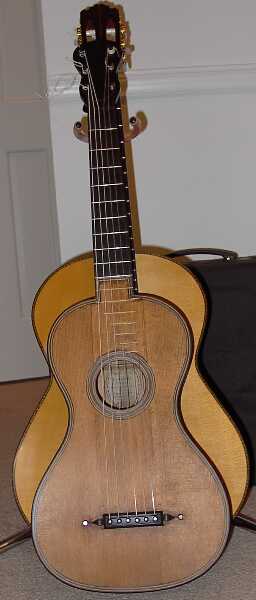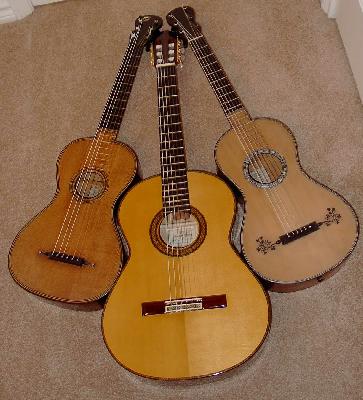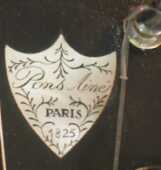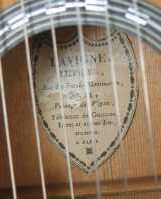 |  |  |
| ca. 1813 French Lavigne over 1994 Contreras Note size difference Photos by Len Verrett, Len Verrett's Guitar Collection |
ca. 1813 French Lavigne left, 1994 Contreras middle, ca. 1819 Lavigne right |
Tail view |
Email Contact
Early Romantic Guitar Home Page
 |  |  |
| ca. 1813 French Lavigne over 1994 Contreras Note size difference Photos by Len Verrett, Len Verrett's Guitar Collection |
ca. 1813 French Lavigne left, 1994 Contreras middle, ca. 1819 Lavigne right |
Tail view |

Anton Staufer Original and |

Anton Staufer Copy by Kresse |


Lavigne , Paris (France), circa 1819 collection of Len Verrett Photo courtesy of Sinier de Ridder. |
Many guitars exist that are unlabeled. The label is paper or animal skin which is glued with animal glue to wood. These labels tend to deteriorate and come off over time. Without the label, it will never be known exactly who, when, or where the instrument was built. When a label is missing, there are a small number of expert luthiers who, for a fee, can sometimes find the builder or the workshop by observation of the craftsmanship, and the interior building (blocks, bars, scales etc..) and also liken it to other guitars and with photos. Obviously, the presence of the label increases the guitar's value. If you are looking for a player for your own use, however, you can usually buy a lot better guitar for less money by getting an unlabeled instrument. |

 |
The term "Parlor" guitar is frequently misused. A "Parlor" guitar is actually a guitar with a smaller body size, around the turn of the 20th century. Some true parlor guitars are gut/nylon, but many are steel-string. However, lots of 19th century classical guitars are mis-labeled as "Parlor" guitars, so keep that in mind as you look around using search engines and such. Be careful to make sure the guitar is nylon / gut strung, and not steel string, if you are buying sight unseen. The body shape gives them away, as the distance from the bridge to the bottom of the guitar gets greater after the 1850's. The "parlor" guitars are not worth as much generally as the early 19th century guitars. Use the term "parlor" when searching for these instruments because they are frequently referred to as such by shops who are not familiar with them. |
Parlor Guitar Very Different |
 Mail@EarlyRomanticGuitar.com
Mail@EarlyRomanticGuitar.com